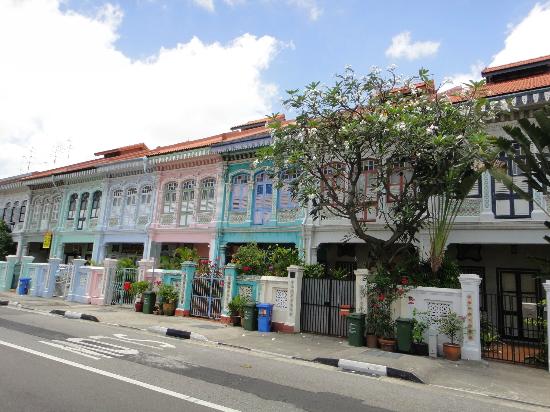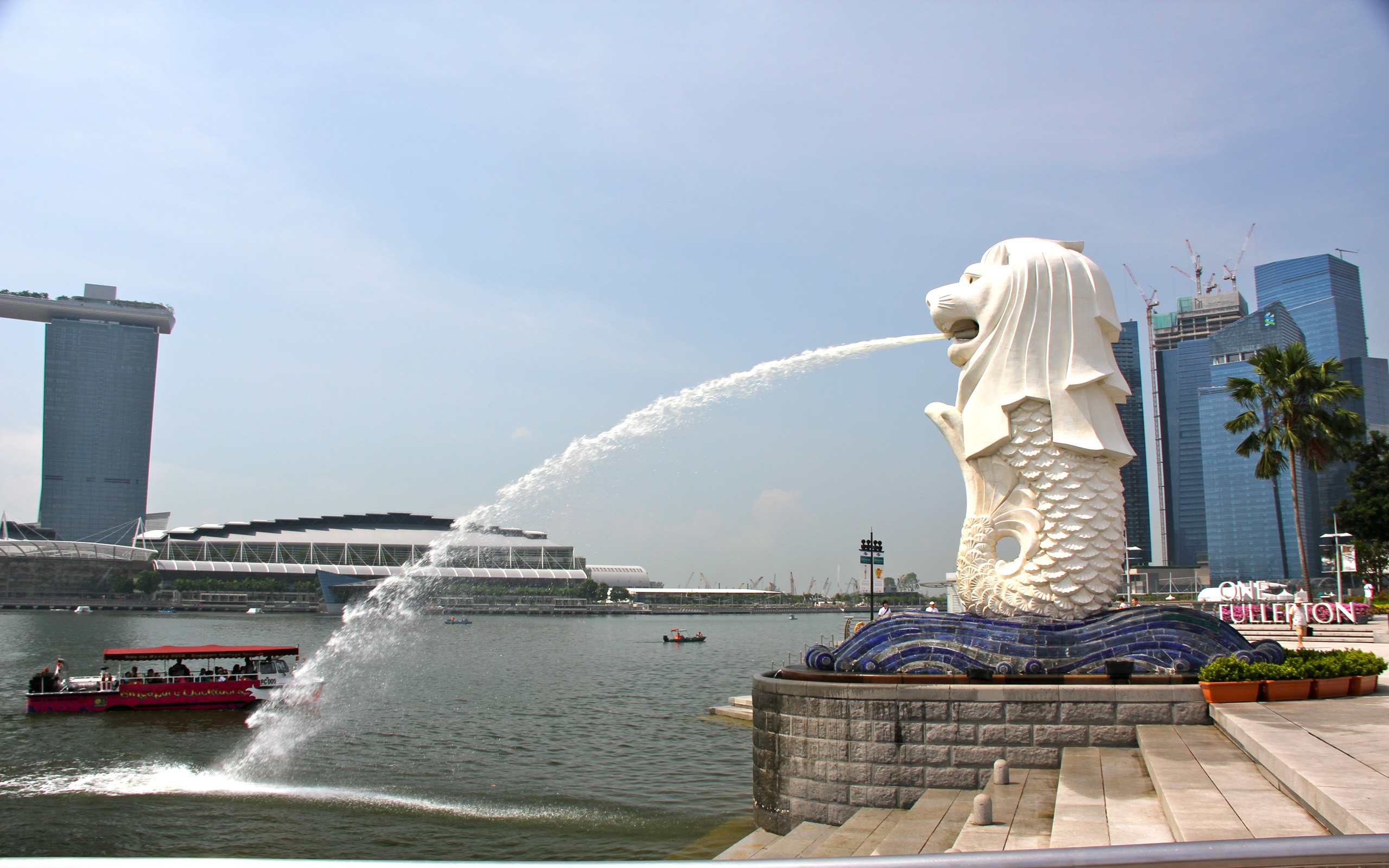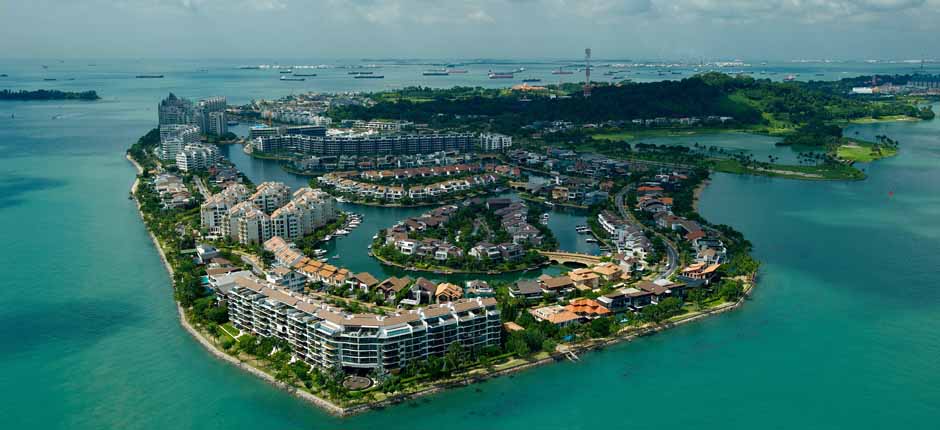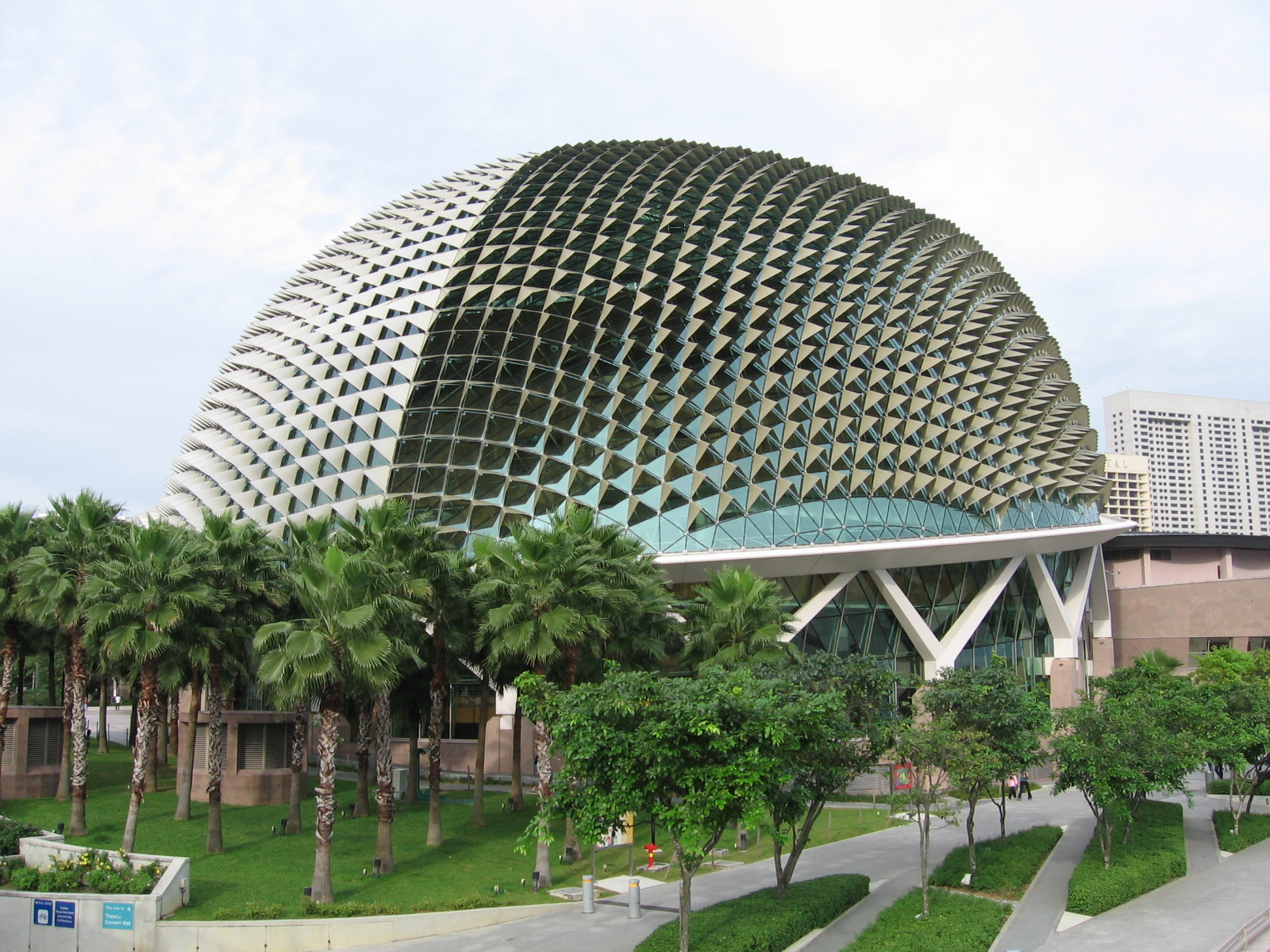Singapore /Singapore /Singapore
Sight Address : Katong District,Singapore, Singapore (Downtown Core).Edit
Detail InformationEdit
Katong is a residential area in the east of Singapore near the seafront. Formerly located by the sea, land was reclaimed all the way to East Coast Park to provide more land for housing and recreational purposes due to shortage of land in the late 1960s after Singapore gained independence.Katong was the location of many villas and mansions of the wealthy elite in the late 19th to the mid 20th centuries, who made their fortunes in the Far East and built seaside resorts, villas and manors along the beachfront of Katong, beginning from Katong Park to the end of the East Coast.Katong’s rich cultural mix has contributed to its unique cuisine. Katong is well known for its restaurants serving Peranakan (Straits Chinese) cuisine, particularly a spicy Malay noodle soup called Peranakan laksa. Katong Laksa originated from Joo Chiat area. The hawker was nicknamed ‘Jangok” by the peranakan, because he had a few strands of hair at his chin. He was an itinerant hawker and lived in Tembling Road/Joo Chiat Terrace. Later he moved his business into the eating house at East Coast Road/Ceylon Road. Because the Katong people loved his laksa, it has come to be known as the Katong laksa throughout the world in Hong Kong and New York.
HistoryEdit
Katong’s history has been rooted in prestige and wealth. Many wealthy English, Portuguese, Anglo-French and Chinese settlers bought parcels of land here beside the sea to cultivate plantations. They built business empires from trading in these early international commodities such as cotton, coconut and gambier.The earliest cultivation took place in 1823, when Francis Bernard, son-in-law of Lieutenant Colonel William Farquhar, the first Resident of Singapore, started a coconut estate in the district.Gradually, the crown of Singapore sold plots of land in the area stretching from Frankel Avenue, Siglap Road, to the Geylang River. From Geylang Road to the sea, land was granted to individuals in large parcels, ranging from 8 to 200 hectares. Pioneer estate owners included Thomas Dunman, Thomas Crane, Sir Jose d’Almeida, John Armstrong, Whampoa Hoo Ah Kay, Chew Joo Chiat and the Little family.Most of the land was given over to coconut plantations because of the suitably sandy conditions, although cotton was also introduced in February 1836 . Unfortunately, cotton planting was largely a failure and only coconut plantations remained.
In the first three decades of the twentieth century and especially after World War I, Katong developed from a weekend seaside retreat into a home for the wealthy, who built their main residence away from the hustle and bustle of town-life in the form of ornate and immense colonial seaside bungalows. Katong then took the form of a wealthy suburb. Large colonial, Chinese and Peranakan bungalows were built along Meyer Road and Mountbatten Road from Katong Park to Tanjong Katong (which in English means “Road of the Turtle Mirage Promontory”). By 1928 Katong had grown to the extend that the Inspector-General of Police, H.Fairburn remarked: “The development of the area from Katong to Joo Chiat, which has been so rapid in the past two years, promises to continue, and from every point of view one sees the necessity of providing for a sub-divisional station in the suburb. The suburb at present possess no police station.” From then on Katong encroached into Joo Chiat area from Tanjong Katong to Telok Kurau Road. East Coast Road (now divided into East Coast Road and Upper East Coast Road) have many upper-class family homes.The Katong of today covers both sides of Tanjong Katong Road and the seaward strip along Mountbatten Road and East Coast Road, stretching from Katong Park up to Martia Road. Also included in this strip are the Katong Church and CHIJ Katong Convent.The present Katong area stretches from Mounbatten Road, East Coast Road to Siglap. The Katong in Joo Chiat was formally an ethnic enclave of the Eurasians.Many “town” Eurasians moved here in the 1920s and 1930s due to several reasons. They were attracted by the building of Saint Patrick’s (1933) and also by the Holy Family Church also known as “Katong Church”. Convent of the Holy Infant Jesus in Katong (CHIJ Katong) was built much later on Martia Road and expanded its secondary school into Marine Parade after land reclamation of the East Coast in 1965.The Eurasians wanted better homes after the Depression; however, the city centre of Singapore and its surrounding area was experiencing congestion and pollution with overcrowding being common. Therefore, they sold their estates in town and built their homes in Katong. The Chinese settlers followed suit.
Must SeeEdit
Must see
Visiting TimeEdit
N.A.
Closed OnEdit
N.A.
Best Season to VisitEdit
June to July and November to December.
Best Time To VisitEdit
N.A.
Time Required for SightseeingEdit
N.A.
Ticket Required : No Edit
Individual National Adult : N.A.
Kids : N.A.
Individual Foreigner Adult : N.A.
Kids : N.A.
Still Photo Camera : N.A.
Video Camera : N.A.
Guide Required : No Edit
Approximate cost: N.A.
Dress Code (If Any) : No Edit
Dress Require: N.A.
Restaurants NearbyAdd / Edit
How to ReachEdit
Taxi : Taxis are generally very hard to get during peak hours (Mon-Fri 7:00am – 9:30am and Mon-Sat 5:00pm – 8:00pm) and on rainy days. If you are at a hotel, have conceirge call you a taxi. If you are out about town and have access to a cell phone- calling for a taxi will cut your wait time by 20 to 30 minutes. All taxis are fitted with meters; all are air conditioned; the majority of the taxis are 5-seaters; about 90% of taxis have radiophones; call booking is done via GPS or digital voice dispatch. All passengers must fasten their seat belts by law.
For taxi Booking fee is SGD $2.3. Minimum fare for taxi is SGD $3 for first 1Km. Fare above minimum fare until 10Km is SGD $0.55 per Km. Fare above 10Km is charge SGD $0.628 per Km. Taxi Waiting charges per hour is SGD $17.6. Peak Hours charges is diffrent.
Bus : Public buses run daily from 5.30am to midnight. Extended night services cost slightly more (a flat rate ranging from $1.50-$3.00). Otherwise, most fares depend on distance travelled and range from 67 cents to $1.58 for air-conditioned comfort (almost all public buses in Singapore have air-conditioning today). There are also “feeder” bus services that charge a flat rate of 67 cents. Each bus should not take more than 15 to 20 minutes to arrive at the bus stop.
Train : Singapore MRT system is very well connected to different parts of Singapore and very clean! If you have the time and plan to explore around little Sunny island, get the the Singapore Tourist Pass!
It runs 6am-12mn, fares start at S$1 (70cents in EZ link). Tickets can be purchased in all MRT stations. You just have to insert your money through the ticket machine. Rush hour’s usually 7am-9am, 11am-2pm and 4pm-7pm.
Air : Changi Airport is the country’s main airport. From the airport there are a number of ways to get into the city:
Taxi is easiest – simply follow the signs after clearing customs. Meters are always used in Singapore and prices are reasonable. A trip to the city during the day will be between $20-$30 including $3-5 airport surcharge. An additional 50% surcharge applies between midnight and 06:00.
Limousines charge a flat $50 to anywhere in the city and are a pretty good deal after midnight, as you can skip the queue and avoid the surcharge. The same pricing applies to chartering van-sized MaxiCabs, which are good for large families or if you have lots of baggage.
Shuttle – Shared six-seater MaxiCab shuttle service to designated areas/hotels costs $7 and can be booked in advance or in the arrivals hall. 6AM-2AM, every 15-30 min.
Subway – MRT trains run from a station between T2 and T3, but you’ll need to change trains at Tanah Merah to a city-bound train: just exit through the left hand side door and cross the platform. The 30 min ride to City Hall station costs $1.90 plus a refundable $1 deposit, and trains run 05:31-23:18.
Bus – Bus terminals can be found in the basements of T1, T2 and T3. 06:00-23:59 only. Fares are less than $2.00, exact fare required (no change given) if you pay cash.
Others : N.A.
Things to CarryEdit
Safety / WarningEdit
- Please be advised that all bags and personal items are subject to inspection.
HelplineEdit
- Police: 999
- Emergencies/Ambulance/Fire Brigade: 999
- Police Hotline: 1800 353 0000
- Non-emergency ambulance: 1777
- Flight Information (24-hours): 1800-542 4422
- Tourism Information (24-hours): 1800-736 2000



